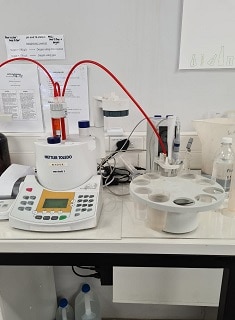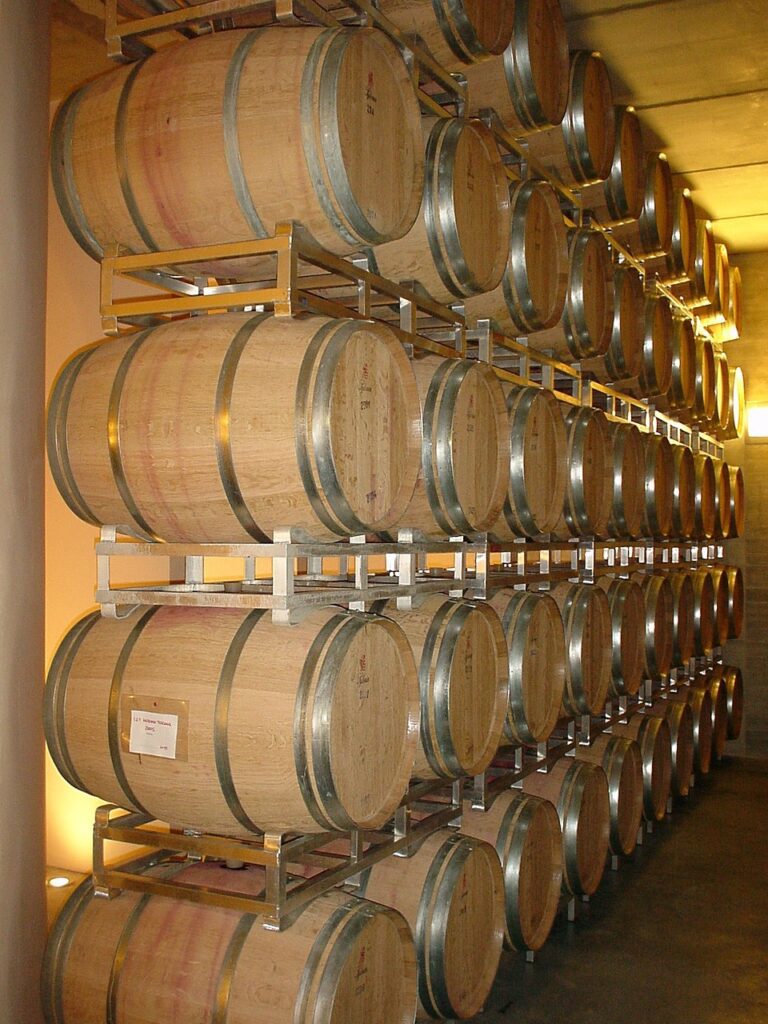The colour, flavour and taste stability of wine is a basic requirement of most wine consumers. Different wine making procedures are applied to obtain it. In order to determine the efficiency of the stabilisation procedures certain tests are applied.
Tartaric acid is less soluble in alcoholic aqueous solutions at lower temperatures and the adding of different compounds can influence the precipitation. In an over saturated solution, the different tartrate ions do not align in such a way that crystal formation and precipitation occur permanently. Over time the precipitation of crystals will however occur. Lower temperatures decrease the distance between the ions and even small dust particles can serve as nucleus for crystallisation. Different stabilisation tests were developed over time to evaluate and ensure the cold stability of wine. These tests can be analytical or cellar procedures.
The so-called cold test is actually only an imitation of the original tartrate stabilisation procedure where wine is kept at a low temperature for a certain time. The temperature decrease causes a lowering in the solubility of the tartrates. The process is however time consuming and commercially much tank space and cooling energy are required. It does also not cause or test absolute tartrate stability, because the temperature after cooling is actually the stability limit. This method can be accelerated by the addition of potassium bitartrate as seed crystals, because the addition will increase the oversaturation.
The freeze and thaw test are done by freezing the wine for approximately 12 hours after filtration. After thawing of the wine a few crystals will be visible. After another hour at room temperature the wine is shaken. If the crystals are then dissolved the wine is seen as stable, but if it is not dissolved it is seen as unstable. The disadvantage of this test is the reliance on visual appearance. If the crystals do exist, but are invisible a wrong conclusion will be made. With the cooling test a wine sample is kept at -4°C for three days. If crystals do appear then, but it dissolves again at room temperature, or no crystals appear after cooling the wine is seen as stable.
The conductivity test uses the conductivity of wine at a certain temperature to determine its cold stability. The conductivity of wine is influenced by temperature and at lower temperatures the conductivity is lower. After the wine is cooled to the required temperature of 0°C for white or 5°C for red wine, up to 4 g/L of potassium bitartrate is added to it and stirred for 30 minutes. If the wine has already been cold stabilised in any way the dosage of potassium bitartrate can be diminished. If the conductivity does not decrease more than 4%, when the required temperature is reached the wine is seen as cold stable.
The calculation of the concentration product of potassium bitartrate (CPKHT) is a more complex way of testing cold stability. Tartrate instability is determined by the temperature, pH, tartrate concentration and the composition of the tartrate concentration. The latter consists of tartaric acid (H2T), bitartrate ions (HT–) and tartrate ions (T-2) which percentages are determined by pH. With increasing pH, the H2T-percentage decreases, the T-2-percentage increases and the HT-percentage increases initially to a maximum at a pH of 3.6 to 3.7, whereafter it decreases again.
The concentration product (CPKHT) is calculated by the following formula:
CPKHT = (K (mg/L) ÷ 39 100)) x (tartaric acid (g/L) ÷ 150.1)) x (% bitartrate ion ÷ 100)
Concentration products differ at different temperatures and wine types (www.etslabs.com). Researchers also differ concerning the marginal stability value for wine. For white wine it is 8.0 to 9.4 x 10-5 and red wines 17.6 to 18.0 x 10-5. If it is lower than these values, the wine is seen as stable. This method however requires advanced analyses executed by wine laboratories.
All the mentioned stability tests have a degree of uncertainty associated with it and future stability can also not be indicated by it. It is not necessarily due to the test method, but rather as a result of changes in the wine composition over time. A conductivity test, which can determine the saturation point (TSAT) at different temperatures, can determine the status of a wine’s cold stability (Carey, 2021).

Cold stability of wine can be determined analytically. (Photo: Vinlab.)
Reference
Carey, R., 2021. Cold stabilization testing has many options. Wine Business Monthly, May 2021: 26 – 33.













